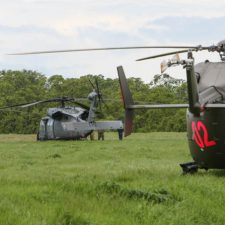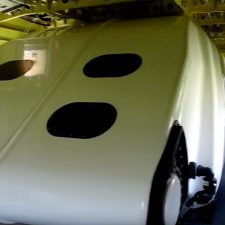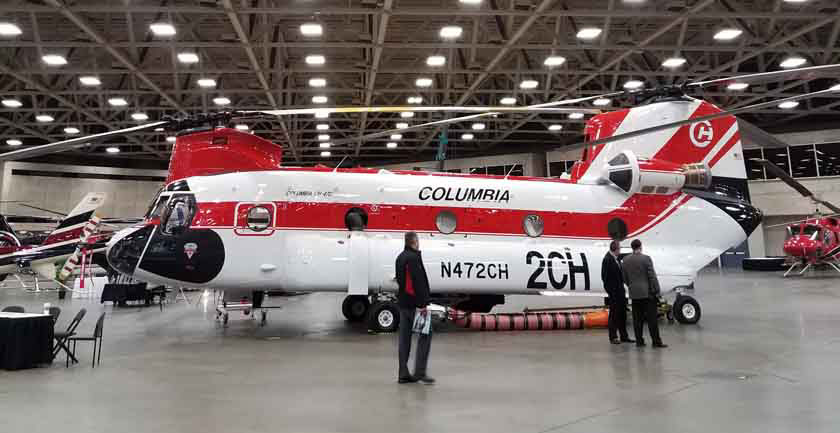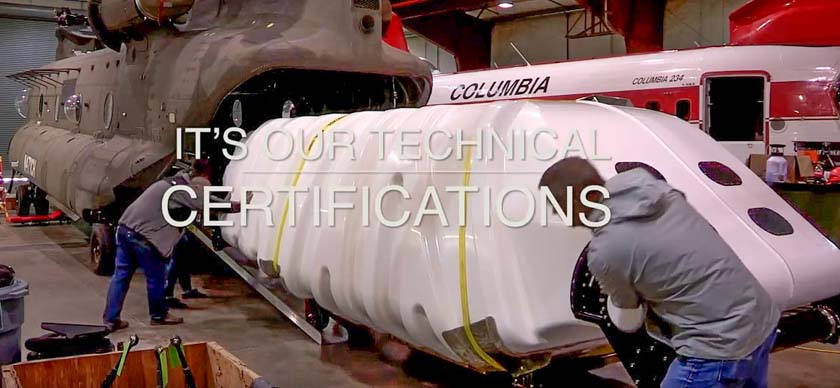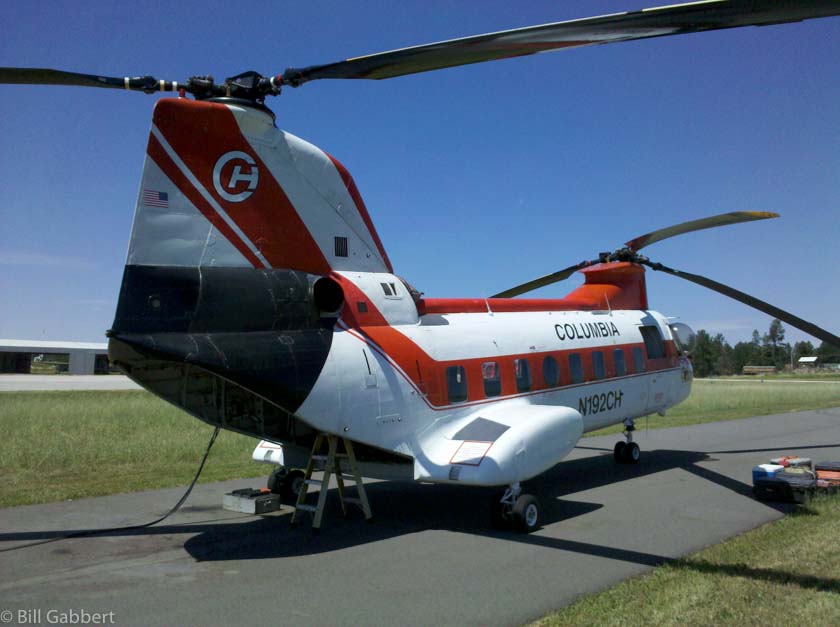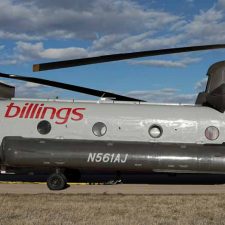By John Yount
(All photos are from the 2017 helicopter water bucket training, shot by Bob Martinez, a Volunteer in Prevention Photographer with CAL FIRE)
California’s annual Army National Guard helicopter water bucket training took place this year near Sutter Creek, California. National Guard and Air Force helicopters from Mather (Blackhawks), Stockton (Chinooks), and Moffet (Pavehawks) participated in the training over the three-day period. Classroom sessions, water drops, and the inevitable exchange of information among personnel will help facilitate a smooth activation when the aviation assets are needed.
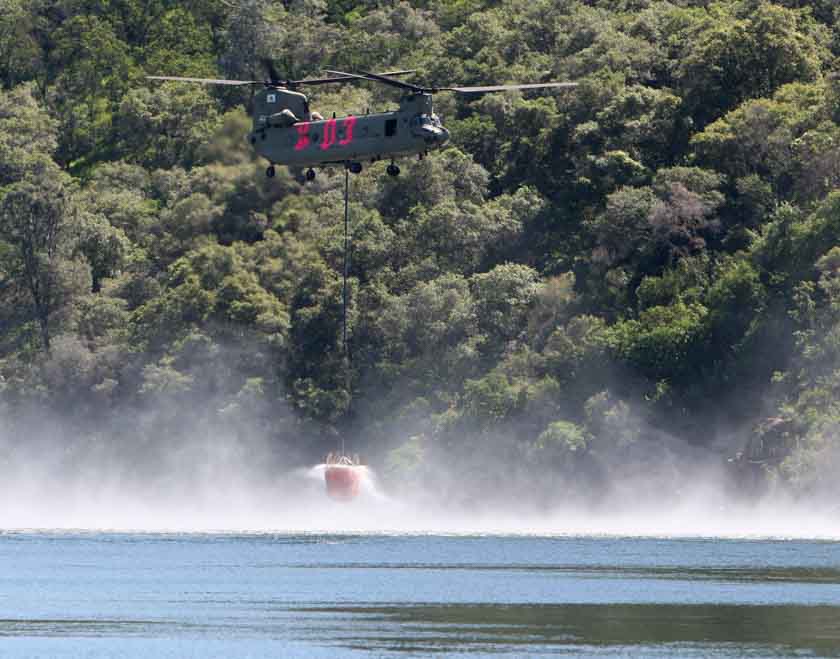 There is much more to this story than just an annual training. The interaction of the Military and State of California has spanned over half a century. This cooperative spirit has been the success of the program. Although the Guard and Air Force Reserve have their own mission agendas it is the history of the Guard and CAL FIRE working together during the wet months that has contributed to a significant enhancement in fire bucket reliability, versatility, and performance.
There is much more to this story than just an annual training. The interaction of the Military and State of California has spanned over half a century. This cooperative spirit has been the success of the program. Although the Guard and Air Force Reserve have their own mission agendas it is the history of the Guard and CAL FIRE working together during the wet months that has contributed to a significant enhancement in fire bucket reliability, versatility, and performance.
With the introduction of the CAL FIRE (then CDF) Military Helicopter Manager (MLHM) program in California in the late 1990’s it was deemed important that a CDF aviation person be assigned to each helicopter during an activation. Flying with the Guard, CAL FIRE personnel work as part of a team providing tactical input, complete logistical support, and coordination with the Guard and CAL FIRE command centers.
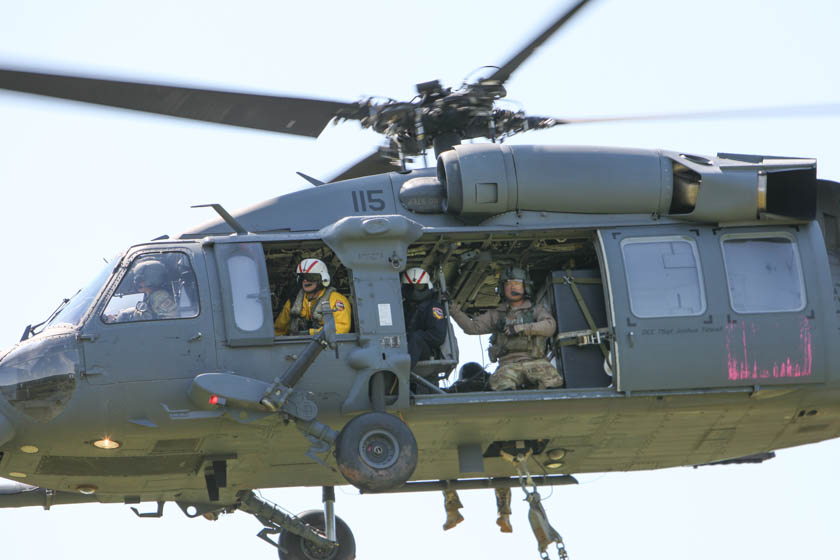
Development of new helicopter water bucket technology
At the beginning of the MLHM program it was quickly identified that the rigid 2000 gallon Big Dipper buckets and the special production for the Guard of a 1140 gallon Bambi Bucket needed to be addressed. The lead CDF person approached CDF management with a plan to initiate an updated program with respect to working with the Guard. One of the four components of the plan was to work on the buckets. A phone call to SEI (Bambi) saw an immediately response. Two SEI representatives, the general manager, and chief engineer came to California to work with CDF and the Stockton Guard to make a change.
The following fire season a new generation 2,000 gallon Bambi Bucket was presented to the CDF and Guard for testing during that fire season that became very active. The 2,000 gallon Bambi bucket was put to the test. From the lava beds of the Modoc National Forest to Southern California in a three week period the redesigned Bambi delivered 1.6 gallons of foam enhanced water flawlessly. The interaction between the Guard, CDF and Bambi wasn’t just a business model but evolved into a “can do” chemistry that saw the development of many new Bambi products. The hub for new products was the CDF’s Baseline Helibase/Heliport and Fire Camp near Jamestown, California, unofficially known as the Baseline Skunk Works. The next five years saw the development of numerous fire suppression products for helicopters.
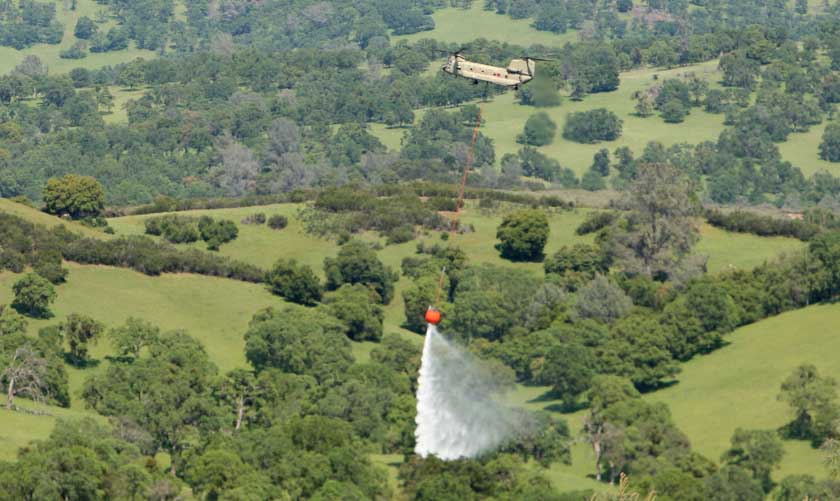
One of the concerns of using the larger 2,000 gallon Bambi Bucket was the inability to pick up a full bucket of water in a source less than five feet deep. A skilled inmate work team of four directed by CDF personnel at Baseline started a Bambi modification of a 324 gallon Bambi with SEI providing a submergible pump. Intermountain Helicopters of Columbia, California provided the copter that would test this 324 gallon “power fill” Bambi while pumping from a 1,000 gallon pumpkin tank. With SEI on site during testing this was the beginning of the power fill bucket era.
A second Baseline Skunk Tank project was to develop a multi-variable drop valve for the buckets. Two prototypes were made. One was divided into two separate chambers, with each having a small rubber valve allowing the load to be split. It was the Stockton Guard that came to Baseline (about 10 minutes from Stockton) and flew a helicopter with the modified bucket.
The second prototype used compressed air to open and close a carburetor butterfly valve. Again the Stockton Guard provided the Chinook, which is an external/internal cargo hauler. Instead of flying a four ton concrete slab around for external flight training the external load training hours were used to practice and develop new ideas in aerial fire fighting. With SEI working with the Guard and CDF a clearer picture of understanding the needs of the aerial fire fighting community evolved. Products like the SEI Torrentula Valve with power fill became part of SEI’s product line. Today ninety percent of the California Guard Chinook helicopter buckets have been equipped with these valves and pumps.
The concept of a portable water tank of over 10,000 gallons was imagined at the Baseline Skunk Works. SEI was contacted and liked the idea. Within two months the first Heliwell arrived at Baseline. Although the Guard wasn’t used to dipping from the Heliwell, the “test to destruction” was accomplished by dropping 2,000 gallons of water into the well’s opening from fifty feet. The tank performed as designed, a tribute to SEI engineering and manufacturing.
The next project for the Guard and CDF was how to fill from a small or shallow water source, as many of the water dip sites for helicopters in arid California are less than four feet in depth. A manufacturing company, TMR Fabrications in Merced, California was contacted. The idea was to build an external rectangular tank that could be transported inside a Chinook. The tank needed to be capable of being loaded and unloaded in less than ten minutes The TMR Water Rat Tank was built with input from the CDF Baseline Skunk Works and the Stockton Guard. What evolved was a self-contained 1,800 gallon water tank powered by a twelve horsepower engine driving a snorkel pump at the end of a twelve foot 5 inch hose. The Water Rat filled to capacity in less than a minute. The “Rats” dump valve could release a partial load or all the water in less than 8 seconds. Once again the Guard flew the tank under a Chinook and was able to use it at no charge.
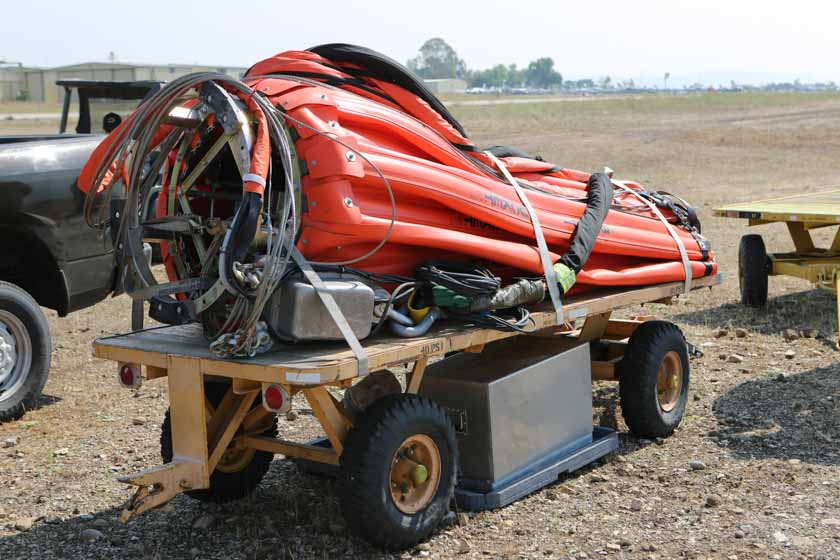 One of the significant features of the Water Rat was the safety of redundant slings, connecting to the Chinooks fore and aft hooks. This was a great safety feature in case of an accidental hook release. This project led to a military self-contained 2,000 gallon internal Chinook water tank that discharges the entire load in less than 8 seconds.
One of the significant features of the Water Rat was the safety of redundant slings, connecting to the Chinooks fore and aft hooks. This was a great safety feature in case of an accidental hook release. This project led to a military self-contained 2,000 gallon internal Chinook water tank that discharges the entire load in less than 8 seconds.
Other projects that came from the Imagineers at the Skunk Works included the Marine Recovery Device (MRD) and the first Fire Sock initially built by Intermountain Helicopters fabric shop. A 10 gallon foam concentrate system for the Chinook designed at the Skunk Works and built by SEI came in two models, gravity and pressure demand.
Although this year’s training near Sutter Creek was just part of the preparation for the upcoming 2017 fire season, the relationship between the CAL FIRE and the Guard over the decades have made a significant contribution to helicopter fire fighting products word wide.

